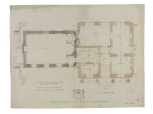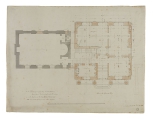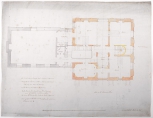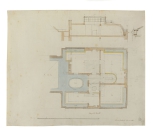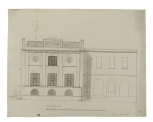Drawing
Pitzhanger Manor, Ealing, London: (executed) a house for John Soane and six unexecuted schemes for a villa at Acton, 1800-1832 (285)
[103] Design and presentation drawing for the exterior, 20 January 1801
Lincolns Inn field Janry. 20. 1801
Possibly Seward, Henry Hake (1778--1848), draughtsman
Henry Hake Seward (1778-1848, pupil and assistant 1794-1808) or Thomas Sword (pupil 1799-1804) (Day Book 14 January 1801), Soane
Possibly Thomas Sword, draughtsman
Henry Hake Seward (1778-1848, pupil and assistant 1794-1808) or Thomas Sword (pupil 1799-1804) (Day Book 14 January 1801), Soane
SOANE, Sir John (1754--1837), architect
Henry Hake Seward (1778-1848, pupil and assistant 1794-1808) or Thomas Sword (pupil 1799-1804) (Day Book 14 January 1801), Soane
SM 31/2/59



